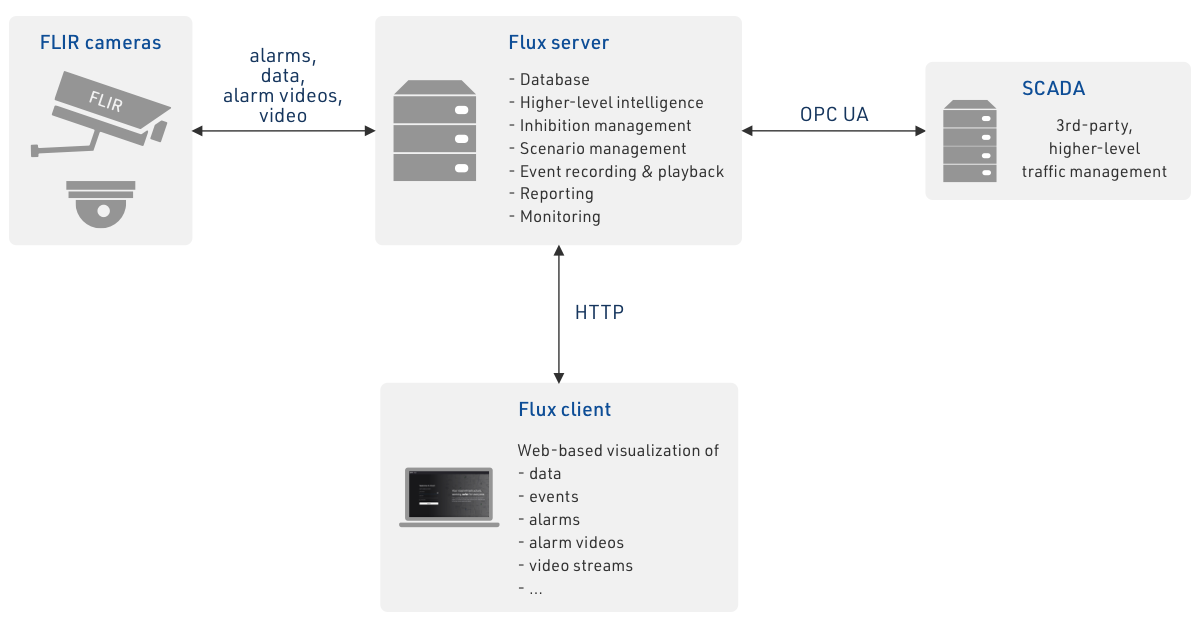
Teledyne FLIR - Intelligent Transportation Systems
Java-based traffic management server
About Teledyne FLIR Intelligent Transportation Systems
Teledyne FLIR designs, develops, manufactures, markets, and distributes technologies that enhance perception and awareness. Organization brings innovative sensing solutions into daily life through our thermal imaging, visible-light imaging, video analytics, measurement and diagnostic, and advanced threat detection systems.
Teledyne FLIR offers a diversified portfolio that serves a number of applications in government & defense, industrial, and commercial markets. Their products help first responders and military personnel protect and save lives, promote efficiency within the trades, and innovate consumer-facing technologies. Teledyne FLIR strives to strengthen public safety and well-being, increase energy and time efficiency, and contribute to healthy and intelligent communities.
One of the markets that is rapidly discovering the benefits thermal imaging has to offer is the traffic video detection market. To ensure full presence in this market, FLIR Systems acquired the former Traficon in 2012. The company has been a major player in the traffic market for more than 25 years.
Teledyne FLIR - Intelligent Transportation Systems, as the company is known today, develops, installs and supports a wide variety of hardware and software products to build the most advanced solutions for traffic video detection and monitoring.
Applications include Automatic Incident Detection (AID) on highways and in tunnels, car and bike presence detection at intersections to optimize the traffic lights, pedestrian detection at pedestrian crossings, traffic flow monitoring and data collection on highways, etc. These systems support safer and optimized traffic flows in tunnels, on highways, on bridges and in cities all over the world.
Flux traffic management server
Flux is an intelligent software platform that is designed to be used with a Teledyne FLIR video detection system. Flux collects traffic data, events, alarms and video images generated by the hardware video detectors. Flux also offers video management capacity and can control network video recorders, video walls, mobile and fixed cameras. Flux provides a user-friendly interface composed of a monitoring and a reporting application and enables real-time monitoring of events and alarms. The client interface is web-based, thus allowing interaction with Flux on any standard PC workstation.
Flux servers are very powerful, often handling 300+ different sensors on one platform. Multiple servers can be deployed together to provide scalability on premise or in the cloud.
A crucial feature of the Flux server is its flexible way of integrating with third-party systems. As incident detection and data collection is only one part of a traffic management system that controls road or tunnel infrastructure, the information mostly needs to be transferred to a higher-level SCADA (Supervisory Control and Data Acquisition) system that also collects information and controls, e.g., lighting, ventilation, traffic signaling, control room video walls, and many other subsystems. Worldwide, a wide variety of such systems exists, each with distinct features and strengths, built and maintained by either local or international system integrators. Very often, these systems rely on open standard OPC UA interfacing to obtain information from the different subsystems, including the Teledyne FLIR Flux server.

The entire Flux server is written in Java code, supporting both Windows and Linux operating systems. Prosys OPC UA SDK for Java library allowed us to add an OPC UA interface to our Flux server with minimum effort. It allowed our development resources to keep the focus on their core task: traffic information processing and storage. Moreover, it ensured a 100% standard interface implementation to the various SCADA systems and proper maintenance & updating of it throughout the product life.
Having all gathered data and events available through this interface, system integrators can optimize their system to provide the most efficient information interface for operators, helping them to guarantee smooth traffic at all times and react quickly in case of incidents.
Thanks to Prosys OPC UA SDK for Java, we were able to create and maintain over the years a standard interface to integrate with a wide variety of customer systems in a very short time, be assured of 100% third-party compatibility, and rely on future maintenance for sustaining the product.
Johan Gachon
Product Manager, Teledyne FLIR – ITS Digital Solutions
What is OPC?
OPC and OPC UA (Unified Architecture) are industry standards that enable software to connect devices, machines and systems from different manufacturers using same interface.
